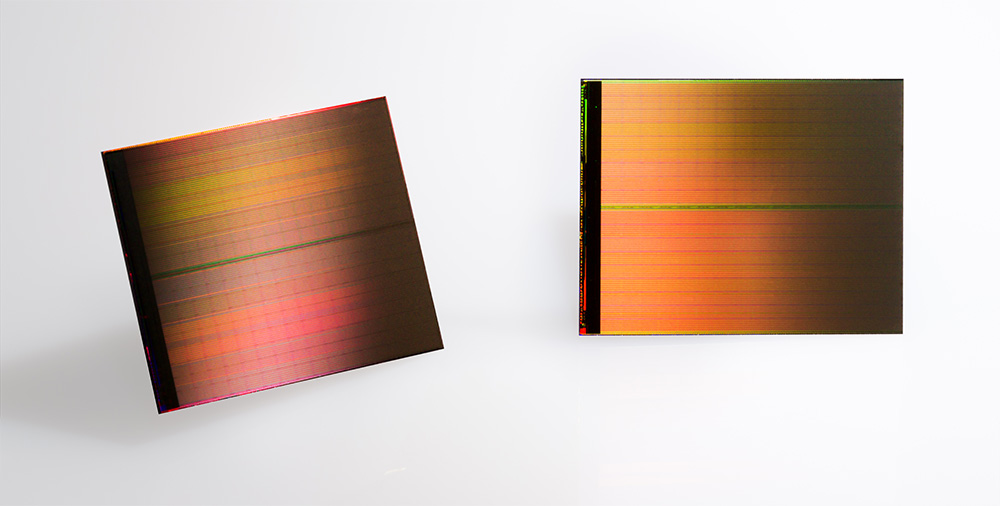Intel and Micron unleash memory innovation dubbed 3D XPoint
New memory type claims to be 1,000 per cent faster than existing standard


Intel has announced what it claims is a brand new form of memory, the first major development in the field for decades.
Developed in conjunction with Micron, 3D XPoint memory (pronounced cross-point'), is designed to be non-volatile, with its makers claiming it is viable for both memory and storage.
Intel and Micron say that 3D XPoint has up to 1,000 times the speed and endurance of NAND flash, the current standard for non-volatile memory.
Part of these huge speed increases is due to the fact that the new technology reads and writes data at the individual bit level, rather than dealing with it in blocks as other types do.
Various use-cases for the new memory have been cited, including low-latency storage and medical tasks, such as "real-time gene sequencing".
There are also potential benefits for Big Data companies. The prospect of 3D XPoint pulling double duty as both memory and storage could lead to huge datacenter cost savings, reducing the square-footage needed for physical server racks.
Consumer applications were highlighted too. Indeed, Mark Durcan, CEO of Micron, was quick to mention the potential for seamless PC gaming experiences, with more densely-packed content and fewer loading screens.
Get the ITPro daily newsletter
Sign up today and you will receive a free copy of our Future Focus 2025 report - the leading guidance on AI, cybersecurity and other IT challenges as per 700+ senior executives
3D XPoint is also 10 per cent more dense than conventional DRAM. However, both companies stressed that they were not aiming to replace existing memory formats.
Greg Matson, Intel's director of strategic planning and marketing for datacentre SSD products, confirmed that "we don't see a future without DRAM in it".
Those wishing to adopt the new technology may not face too much of an uphill struggle though. Albeit in limited capacities, the memory will apparently be ready to use without a great deal of back-end tinkering, and is "applicable in any space that uses DRAM or flash".
While manufacturers and software developers may need to do some optimisation to make use of the full benefit, Matson reassured critics that "you can plug it into Windows 10, it's gonna work guaranteed. It'll work really well."
Adam Shepherd has been a technology journalist since 2015, covering everything from cloud storage and security, to smartphones and servers. Over the course of his career, he’s seen the spread of 5G, the growing ubiquity of wireless devices, and the start of the connected revolution. He’s also been to more trade shows and technology conferences than he cares to count.
Adam is an avid follower of the latest hardware innovations, and he is never happier than when tinkering with complex network configurations, or exploring a new Linux distro. He was also previously a co-host on the ITPro Podcast, where he was often found ranting about his love of strange gadgets, his disdain for Windows Mobile, and everything in between.
You can find Adam tweeting about enterprise technology (or more often bad jokes) @AdamShepherUK.
-
 Asus ZenScreen Fold OLED MQ17QH review
Asus ZenScreen Fold OLED MQ17QH reviewReviews A stunning foldable 17.3in OLED display – but it's too expensive to be anything more than a thrilling tech demo
By Sasha Muller
-
 How the UK MoJ achieved secure networks for prisons and offices with Palo Alto Networks
How the UK MoJ achieved secure networks for prisons and offices with Palo Alto NetworksCase study Adopting zero trust is a necessity when your own users are trying to launch cyber attacks
By Rory Bathgate
-
 Fit for artificial intelligence
Fit for artificial intelligencewhitepaper Ensure data availability to applications and services with hybrid cloud storage
By ITPro
-
 Fit for AI
Fit for AIwhitepaper Ensure data availability to applications and services with hybrid cloud storage
By ITPro
-
 Five key orchestration capabilities to achieve AI value at enterprise scale
Five key orchestration capabilities to achieve AI value at enterprise scalewhitepaper Realize ROI through greater productivity and better business outcomes
By ITPro
-
 Gaining timely insights with AI inferencing at the edge
Gaining timely insights with AI inferencing at the edgeWhitepaper Business differentiation in an AI-everywhere era
By ITPro
-
 Scaling AI from pilot to production: Maximize AI impact with HPE & Intel
Scaling AI from pilot to production: Maximize AI impact with HPE & IntelWhitepaper Transform AI proof-of-concepts into full-scale implementations
By ITPro
-
 Empowering enterprises with AI: Entering the era of choice
Empowering enterprises with AI: Entering the era of choicewhitepaper How High Performance Computing (HPC) is making great ideas greater, bringing out their boundless potential, and driving innovation forward
By ITPro
-
 Reinventing procurement
Reinventing procurementWhitepaper From cost center to innovation driver
By ITPro
-
 Digital workers: Five best practices for a people-first approach to adoption
Digital workers: Five best practices for a people-first approach to adoptionwhitepaper Realize ROI through greater productivity and better business outcomes
By ITPro